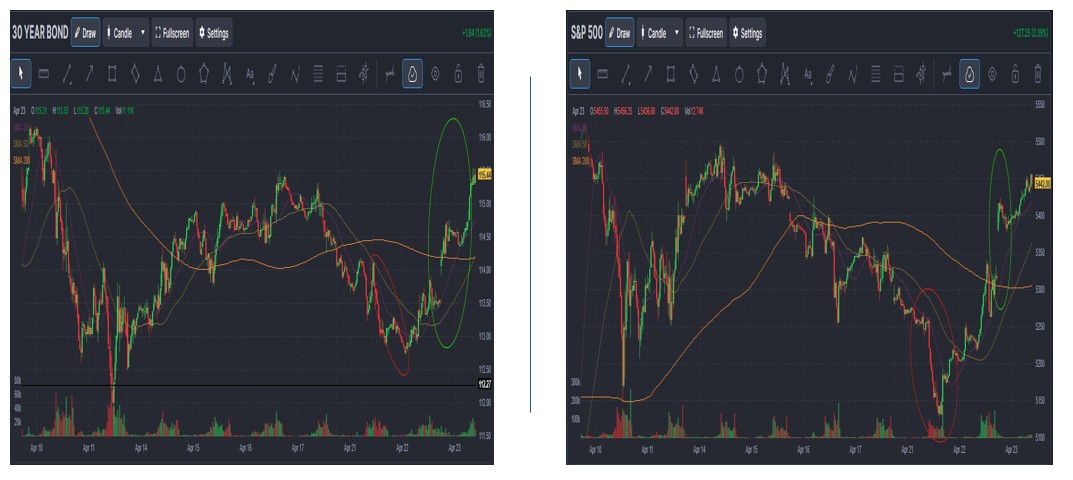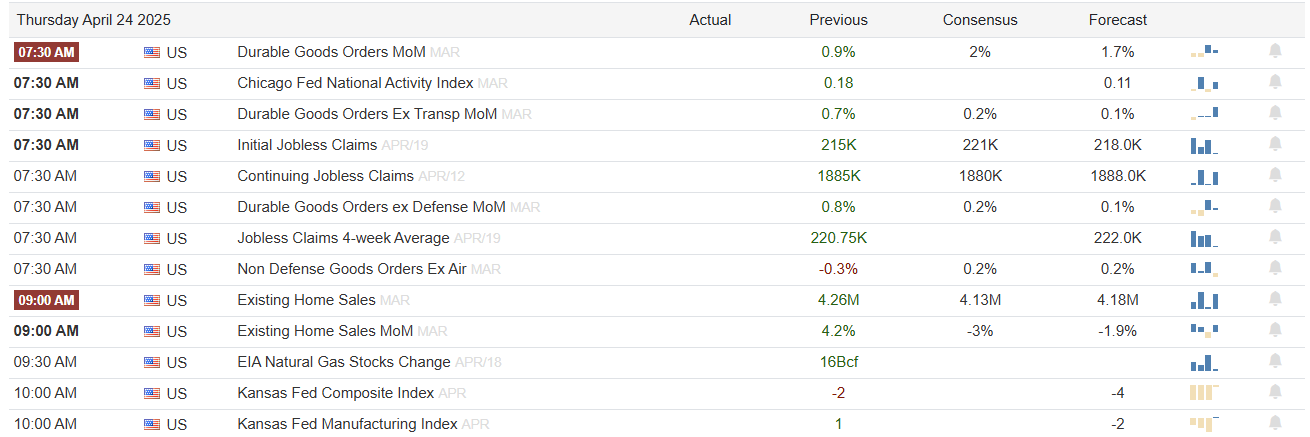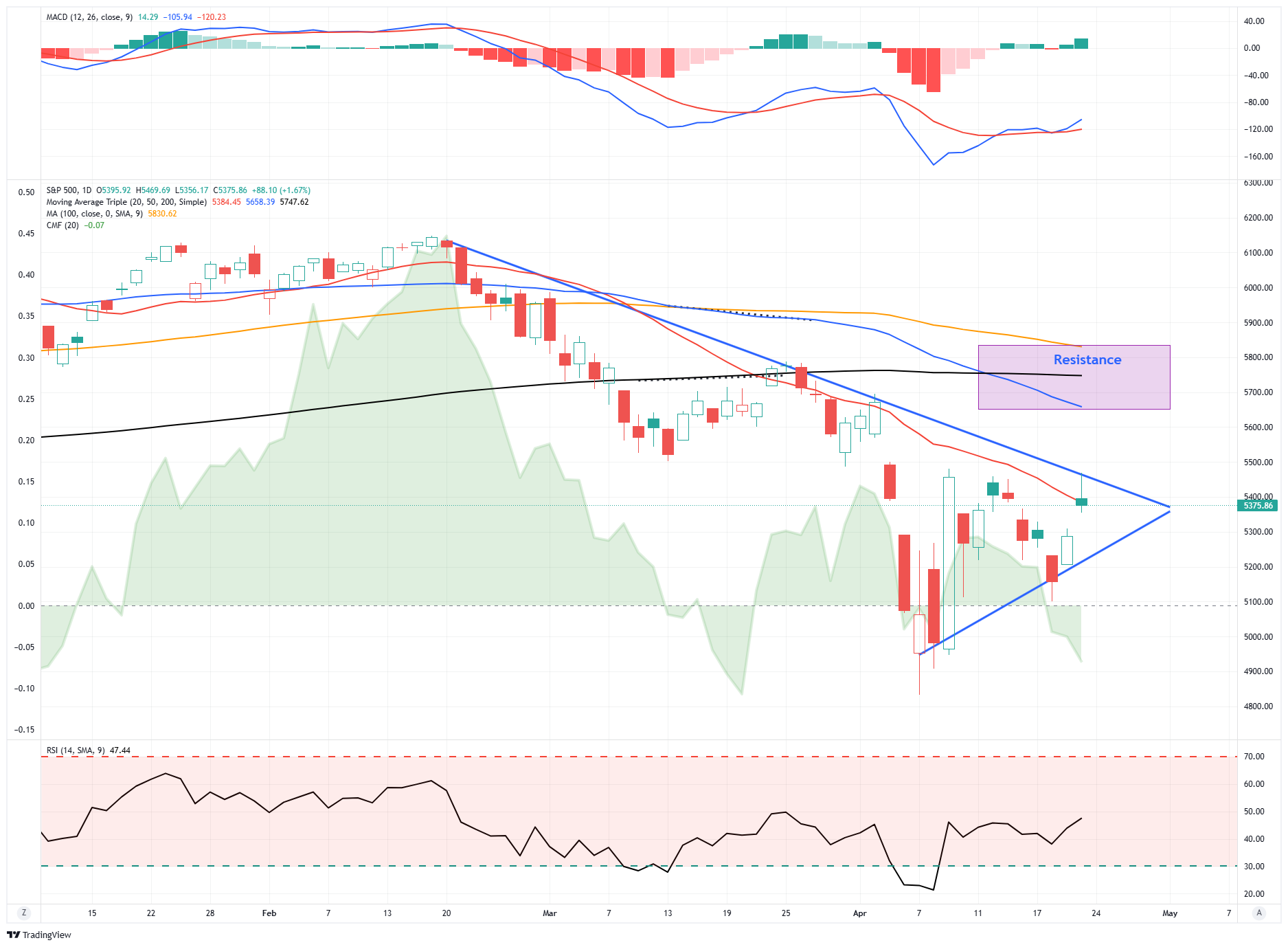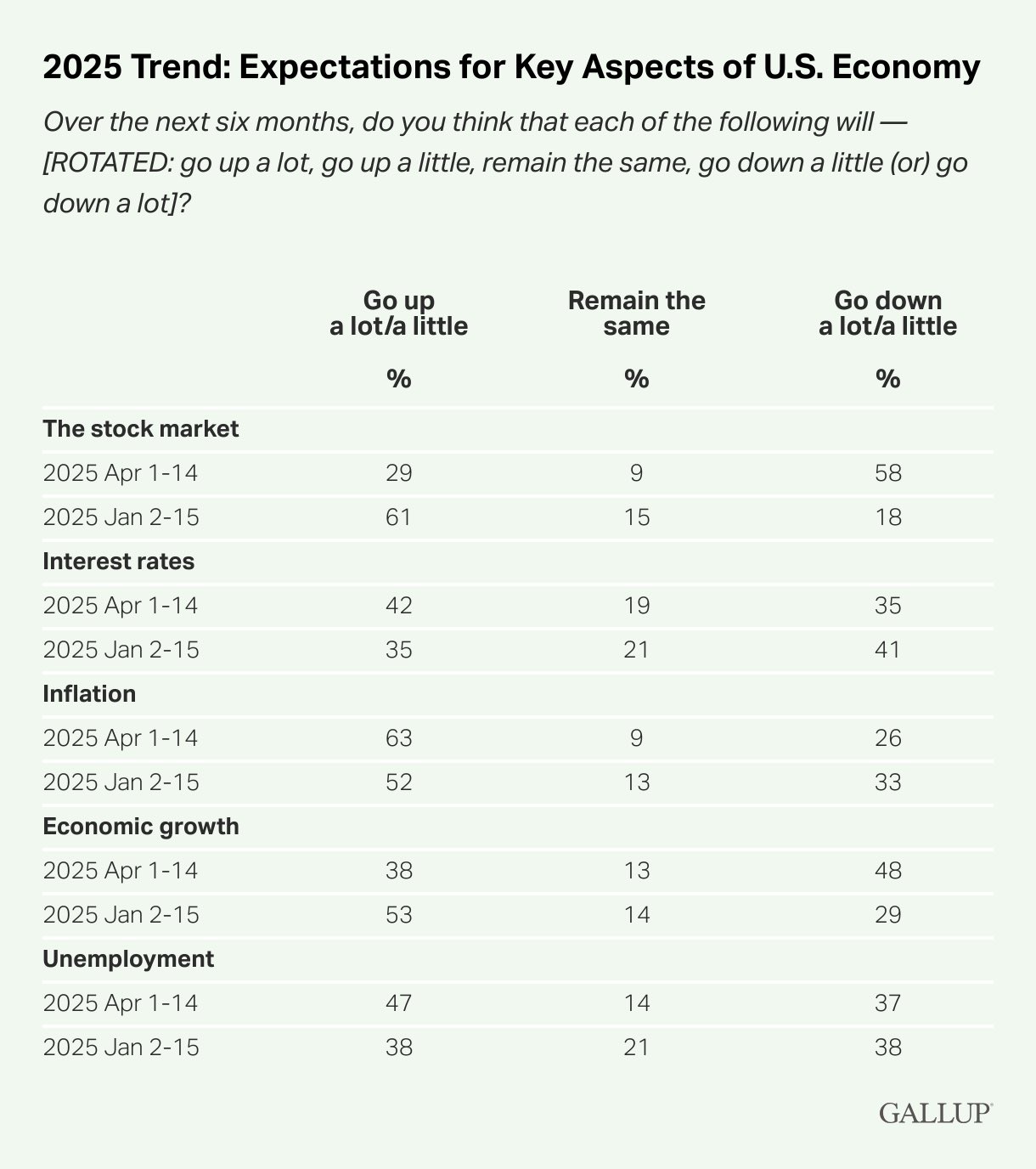Monday’s Commentary started: On Truth Social, President Trump stated, “Powell’s Termination Can’t Come Fast Enough!” The stock and bond markets fell as investors feared President Trump might try to remove Powell from his role as the Chairman of the Federal Reserve. This isn’t new ground; Trump spoke similar words during his first term. However, with tariffs roiling markets, investors seemed to take his post much more seriously.
On Tuesday, likely based on advice from his trusted advisors, Trump backed off. He said he has “no intention” of firing Powell. Per CNBC:
“None whatsoever,” Trump said in the Oval Office when asked to clarify that he did not seek Powell’s removal. “Never did.”
Trump may now realize that any harm high interest rates are causing the economy may pale compared to the economic damage and harm to financial markets that trying to remove Powell would result in. Further, Powell’s term ends in a year. Given Powell’s seeming resoluteness about finishing his term, lengthy court challenges would likely forestall any presidential action to remove the Fed Chair until his term expires. Thus, any actions could be fruitless yet damaging to investor sentiment.
The red circles show the negative impact of Trump’s threatening post last week. Conversely, the green circle highlights the relief that Trump has “no intention” of firing Powell.

What To Watch Today
Earnings

Economy

Market Trading Update
Yesterday , we discussed the rotation of markets and how strong-performing assets often become a source of liquidity when the market rotates. As we have discussed previously, the negativity on the US dollar , the markets, and the economy reached a fevered pitch with bearish sentiment surging and investor allocations to equities declining.
During corrective processes, we often forget that when markets reach more extreme levels, it doesn’t take much “good news” to fuel a decent reversal. Such was certainly the case over the last couple of days amid announcements from the White House that eased the feud between President Trump and Jerome Powell, suggested easing China tariffs, and supporting a relief rally in the markets.
However, that is most likely all this is currently, and significant overhead resistance will continue to weigh on markets over the next month or so. The chart below shows that yesterday’s rally tested the downtrend from the February peak, but cleared initial resistance at the 20-DMA. The bulls need the market to clear the downtrend line to confirm the higher lows from the April bottom.
We could see a follow-through rally for a few days with a MACD buy signal in place and the markets not overbought, but there is a cluster of resistance between 5650 and 5800 that will likely contain any rally for now.

Given the nearly 20% decline from the February peak, many “trapped l ongs” will look for an exit to reduce portfolio risk. Therefore, until confirmed otherwise, investors should use any rally towards 5600 to reduce portfolio risk, raise cash, and hedge accordingly.
As you may be aware, we previously added a small short S&P 500 position to portfolios, which we will add to on any further rally. Most likely, investors should expect a retest of recent lows at some point before this current correction process is complete.
This is not the time to get overly confident in risk-taking. While you may enter stocks at high levels than previously at the next low, the entry point will be much safer for longer-term holding periods.
Gallup Poll: Economic Pessimism Grows
Like other consumer and corporate economic polls, the Gallup poll below suggests growing financial concerns. While consumer angst and corporate anxiety have yet to show up in hard economic data, soft data, like the Gallup poll, warns that without progress on tariff deals, the economy will likely soften more than is currently forecasted by Wall Street.
Furthermore, lower stock prices reduce the propensity of consumers to spend as they feel their wealth is diminished. The so-called “wealth effect” popularized by Ben Bernanke impacts economic activity and plays a key role in driving monetary policy at the Fed.
The polls can flip quickly if consumers and executives see the light at the end of the tariff tunnel. Moreover, passage or at least discussion of lower taxes and friendly changes to corporate regulations would further improve sentiment. However, until then, the current environment fosters weaker economic activity and possibly a recession, the longer the tariff standoff continues.

